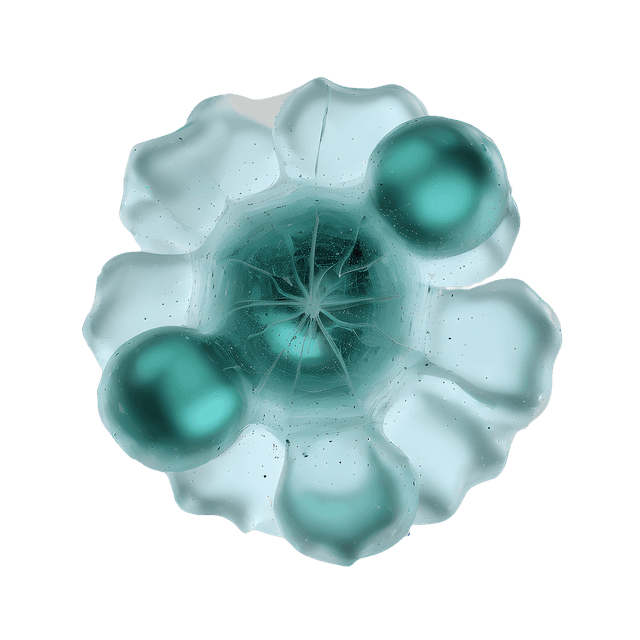What is Akkermansia muciniphila?
Akkermansia muciniphila is a bacterium that lives in the gut and plays a crucial role in maintaining a healthy mucus layer. This mucus layer protects the gut from harmful substances and pathogens. Studies have shown that Akkermansia stimulates the growth of this protective mucus layer (1, 2).
Akkermansia and Body Weight
Several studies have shown that low levels of Akkermansia are associated with high body weight. A study on pregnant women revealed that those with higher body weight had lower levels of this bacterium (3). Similar results have been observed in children and adults (4-8). This suggests that Akkermansia may play a role in weight regulation.
Akkermansia and Diabetes
Research has also shown that low levels of Akkermansia are linked to both type 1 and type 2 diabetes. Studies in mice have demonstrated that Akkermansia supplementation can reduce the incidence of diabetes (9). Similar findings have been observed in humans (10, 11).
Akkermansia and Inflammatory Bowel Disease
Low levels of Akkermansia have also been associated with certain types of inflammatory bowel diseases, such as microscopic colitis (12). This suggests that the bacterium may have anti-inflammatory properties.
How Akkermansia Can Help
One study showed that Akkermansia produces propionic acid, a short-chain fatty acid with anti-inflammatory effects (13). Along with its role in protecting the gut mucus, this suggests that Akkermansia could help maintain a protective barrier for the gut mucosa.
Practical Tips for Increasing Akkermansia
Dietary Changes: Include more prebiotic fibers in your diet. These are found in foods such as onions, garlic, asparagus, and bananas.
Avoid Antibiotics: Antibiotics can reduce the number of beneficial bacteria in the gut, including Akkermansia.
Patience: Since Akkermansia is a slow-growing bacterium, it may take months to see results in terms of increased quantities.
Conclusion
Akkermansia muciniphila is an important part of our gut flora that can contribute to better health by strengthening the gut mucosa and having anti-inflammatory effects. Through dietary changes and possible probiotic supplements, you can increase the amount of this important bacterium in your gut flora.
Scientific References
Derrien M, Vaughan EE, Plugge CM, de Vos WM (2004) Akkermansia muciniphila gen. nov., sp. nov., a human intestinal mucin-degrading bacterium. Int J Syst Evol Microbiol 54(Pt 5):1469–1476.
Belzer C, de Vos WM (2012) Microbes inside—from diversity to function: The case of Akkermansia. ISME J 6(8):1449–1458.
Santacruz A, et al. (2010) Gut microbiota composition is associated with body weight, weight gain and biochemical parameters in pregnant women. Br J Nutr 104(1):83–92.
Karlsson CL, et al. (2012) The microbiota of the gut in preschool children with normal and excessive body weight. Obesity (Silver Spring) 20(11):2257–2261.
Collado MC, Isolauri E, Laitinen K, Salminen S (2008) Distinct composition of gut microbiota during pregnancy in overweight and normal-weight women. Am J Clin Nutr 88(4):894–899.
Everard A, et al. (2011) Responses of gut microbiota and glucose and lipid metabolism to prebiotics in genetic obese and diet-induced leptin-resistant mice. Diabetes 60(11):2775–2786.
Karlsson CL, Onnerfält J, Xu J, Molin G, Ahrné S, Thorngren-Jerneck K (2012) The microbiota of the gut in preschool children with normal and excessive body weight. Obesity (Silver Spring) 20(11):2257–61.
Hansen CH, et al. (2012) Early life treatment with vancomycin propagates Akkermansia muciniphila and reduces diabetes incidence in the NOD mouse. Diabetologia 55(8):2285–2294.
Yassour M, Lim MY, Yun HS, Tickle TL, Sung J, Song YM, Lee K, Franzosa EA, Morgan XC, Gevers D, Lander ES, Xavier RJ, Birren BW, Ko G, Huttenhower C (2016) Sub-clinical detection of gut microbial biomarkers of obesity and type 2 diabetes. Genome Medicine 8(1):17.
Karlsson FH, Tremaroli V, Nookaew I, Bergstrom G, Behre CJ, Fagerberg B et al. (2013) Gut metagenome in European women with normal, impaired and diabetic glucose control. Nature 498(7452):99–103.
Qin J, Li Y, Cai Z et al. (2012) A metagenome-wide association study of gut microbiota in type 2 diabetes. Nature 490(7418):55–60.
Fischer H et al. (2015) Altered microbiota in microscopic colitis. Gut 64(7):1185-6.
Brodmann T et al. (2017) Safety of Novel Microbes for Human Consumption: Practical Examples of Assessment in the European Union. Front Microbiol 8:1725.
By following these practical tips and understanding the scientific background, you can improve your gut health and potentially assist with weight management by increasing the amount of the important bacterium Akkermansia muciniphila in your gut flora.






















